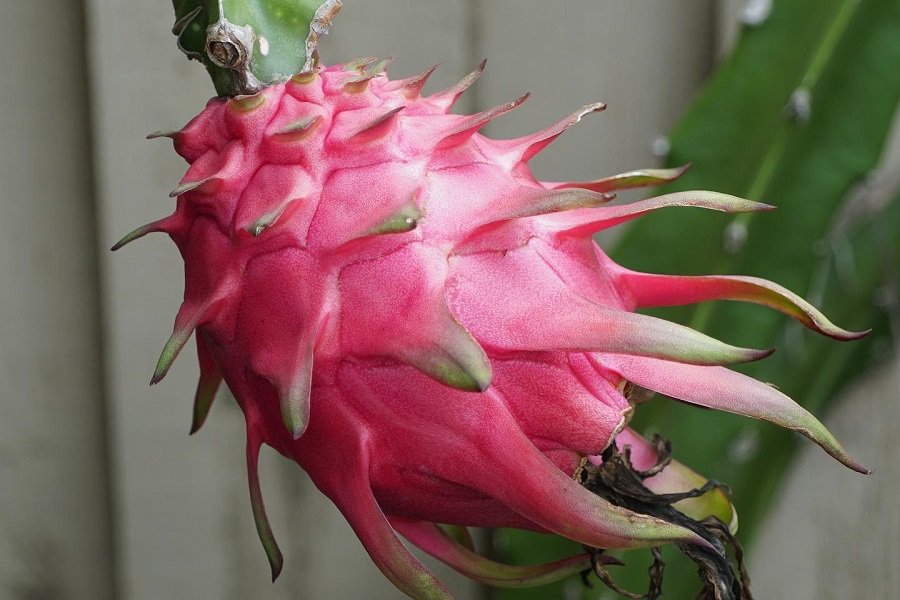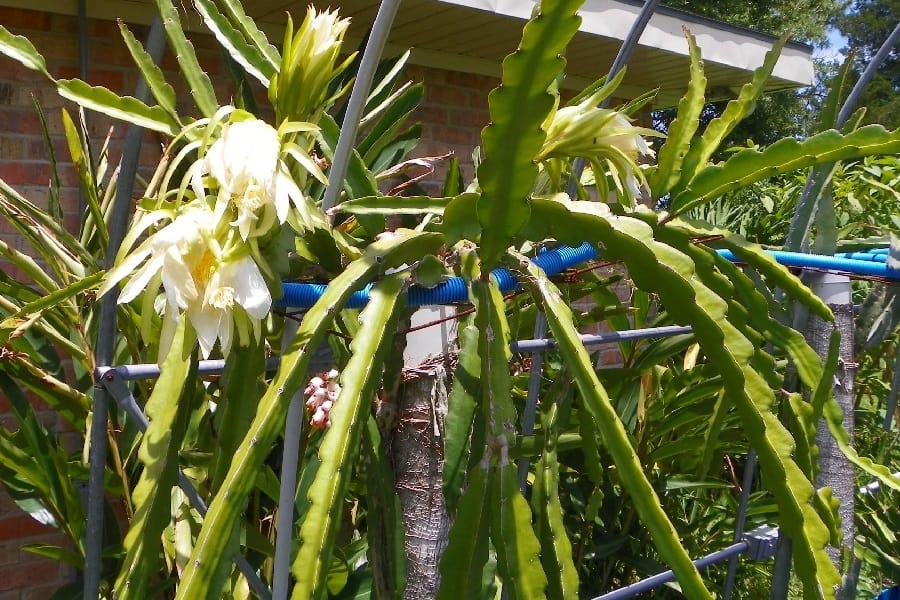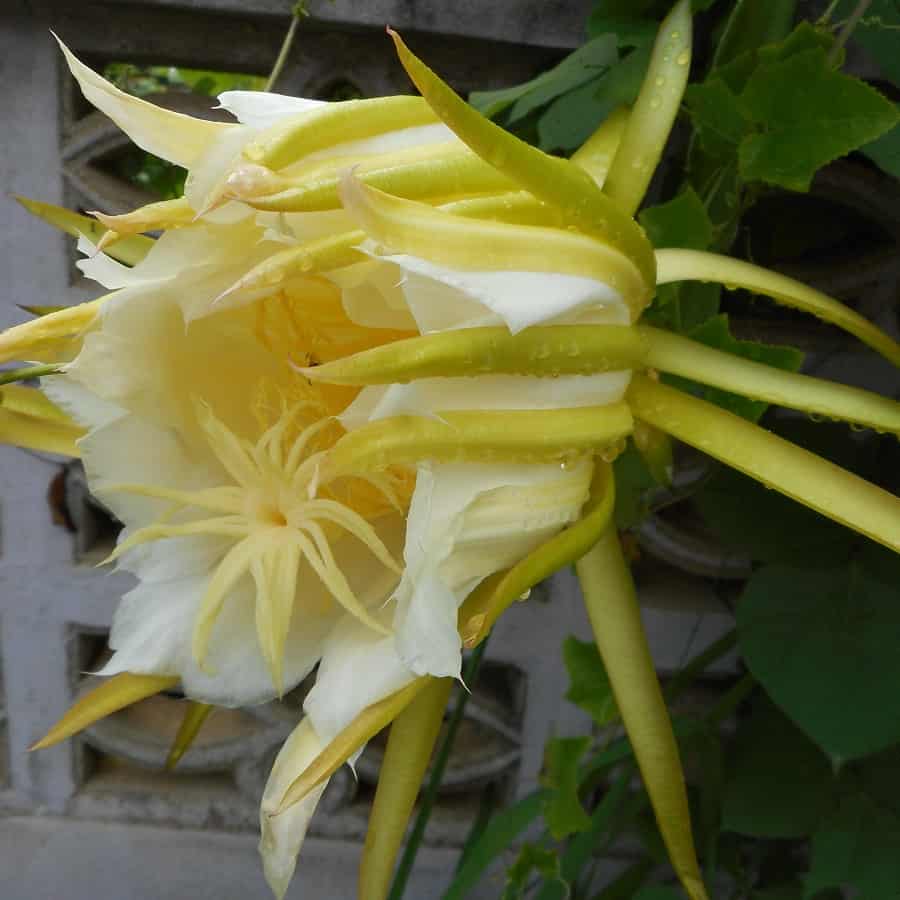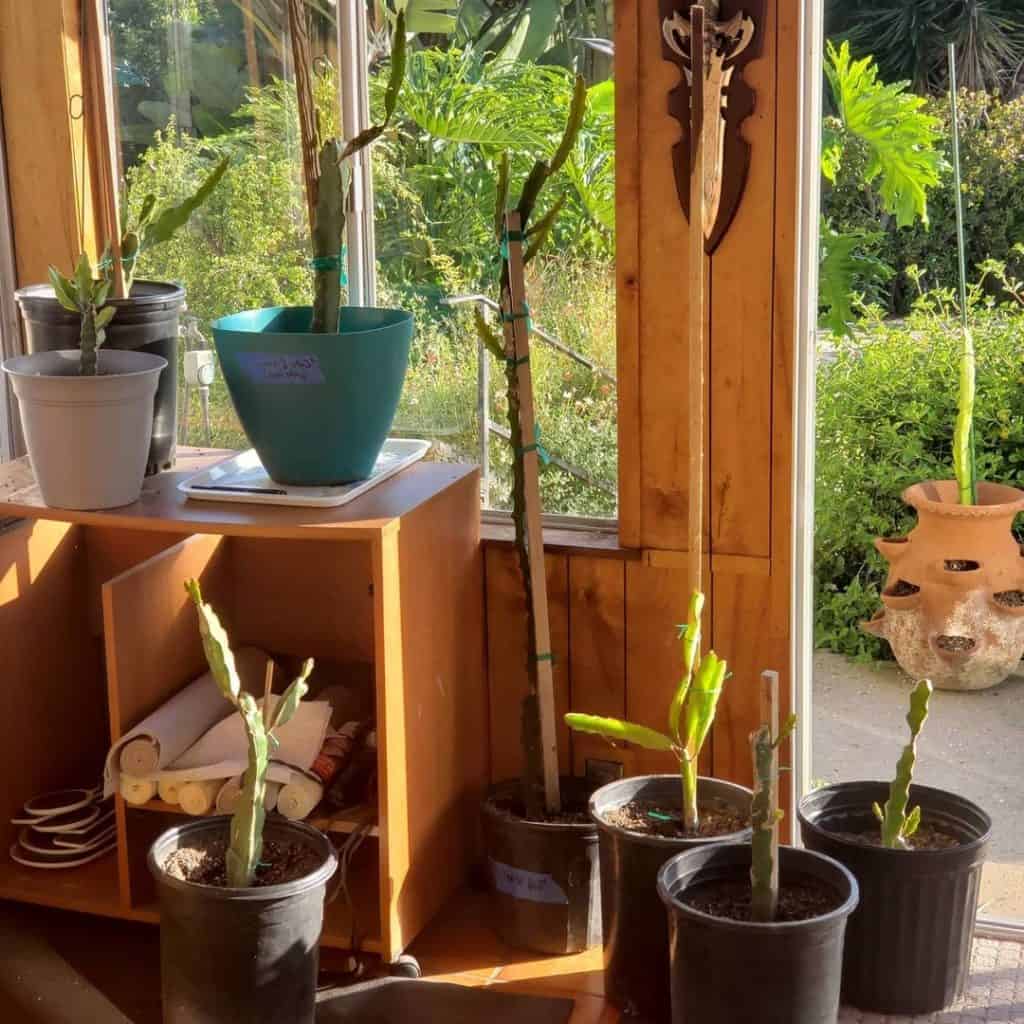Hylocereus guatemalensis: Characteristics and Care
Get ready to be wowed by the Hylocereus guatemalensis, AKA the American Beauty dragon fruit! This quirky cactus produces some of the most vibrant and delicious fruits you’ll ever taste. And just wait until you hear about its magical night-blooming flowers. Keep reading to uncover all the juicy details!

Contents
About Hylocereus guatemalensis
Originally from tropical and subtropical regions like South America and Mexico, this climbing cactus is now grown around the world for its unique edible fruits. The deep pink flesh covered in reddish-green scaly skin goes by the exotic name “pitahaya” or “pitaya” in Spanish. One bite into the soft, sweet pulp and you’ll see why dragon fruit has become a global craze!
The plant itself is pretty wild too. It’s a member of the night-blooming Hylocereus cactus genus, meaning the stunning white flowers only open up after sundown. Make sure to catch a glimpse of these beauties if you decide to grow one at home!
Related Post:
13 Types Of Hylocereus Cacti [With Pictures]
How to Care for Hylocereus guatemalensis
Light

Like most cacti, the Hylocereus guatemalensis thrives in full sun. Aim for at least 6 hours of direct sunlight each day, especially during the spring and summer blooming/fruiting months. If temps climb above 90°F, provide some afternoon shade.
You can use a grow light if keeping your dragon fruit cactus indoors or in a shaded spot outdoors. Place the light about 12 inches from the plant and keep it on for 12-16 hours per day.
Water
A cactus that needs regular watering? You bet! This tropical beauty likes its soil to stay lightly moist while actively growing and blooming/fruiting. Generally water every 5-10 days, allowing the top inch of soil to dry out slightly between waterings.
Cut back to once a month in winter when the plant is dormant. And always use a well-draining soil mix to prevent rot.
Soil
Choosing the right soil mix is key for happy dragon fruit cacti. They prefer a slightly acidic pH between 6.1-7.5. Look for a well-draining cactus potting mix, or create your own by combining:
- 1 part regular potting soil
- 1 part coarse sand or perlite
- 1 part small bark chunks or lava rock
The extra drainage and aeration is essential for preventing rot in this moisture-loving cactus.

Fertilizer
Feed your pitahaya pal every 4-6 weeks during the warm growing season with a balanced fertilizer (like a 10-10-10). An organic option like fish emulsion or compost tea works great too. No need to fertilize in winter.
Temperature and Humidity
The ideal temperatures for Hylocereus guatemalensis are between 65-90°F. They can tolerate slightly cooler temps around 50°F for short periods. Any colder and you risk cold damage.
As for humidity, these tropicals like it on the higher side around 50-60%. Running a humidifier nearby can help indoors. Misting the soil and “tenting” plastic over the plant also boosts humidity.
Pests and Problems
The biggest pest problems tend to be sap-sucking bugs like mealybugs, mites, thrips, and aphids. An organic insecticidal soap or neem oil spray can manage infestations.
Watch for signs of fungal or bacterial stem rot from overwatering too. Prune out any mushy, discolored sections and let the soil dry out more between waterings.
Sunburn can also occur if the plant gets too much direct sun exposure during peak heat. Provide afternoon shade as needed.
Pruning
Since it’s a climbing, vining cactus, the Hylocereus guatemalensis needs regular pruning to control its size and encourage more productive lateral branching.
Remove any side stems until the main plant is tall enough to reach its trellis or support system. Then prune back the growing tip to force lateral branching. Thin out any overcrowded or crossing stems, and remove any damaged, dead, or pest-ridden canes.
Potting and Repotting
Dragon fruit cacti can be grown in large containers (at least 15 gallons) or directly in the ground. Make sure to use a hefty support system like a sturdy trellis or post-and-wire frame that can handle the 250+ lb potential weight.
Space multiple plants 12-16 inches apart. You can trail the heavy fruiting stems over the sides of raised beds or hanging baskets too.
Only repot plants in early spring if their current container is cracked or showing signs of being rootbound. Size up one pot diameter at a time.

Propagating Hylocereus guatemalensis
Want to multiply your pitahaya patch? It’s easy to propagate new dragon fruit cacti from seeds or stem cuttings:
From Seed:
- Scoop out the black seeds from a ripe dragon fruit
- Wash and dry them overnight
- Plant 1/4 inch deep in a seedling tray with seed-starting mix
- Cover with plastic until germination in 2-3 weeks
- Transplant seedlings into individual 4 inch pots once they have a few sets of spines
From Cuttings:
- Take 6-12 inch cuttings in late spring/early summer
- Allow cuttings to cure for 5-7 days until calloused over
- Plant vertically with 1/3 of the cutting underground
- Water sparingly until new growth appears in 4-6 weeks
With a little love and care, you’ll have edible “dragons” popping up all over in no time! Let me know if you have any other questions.
